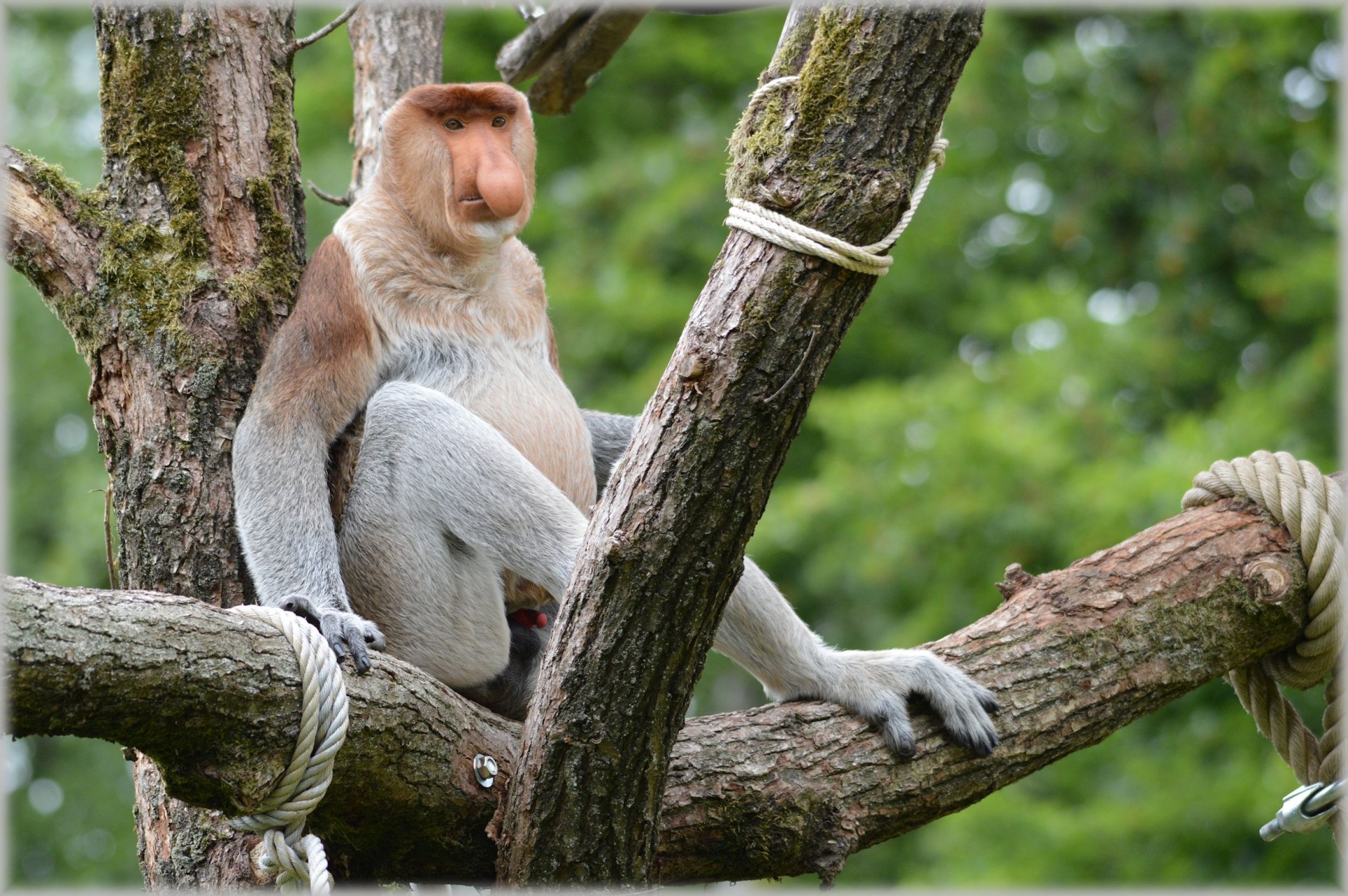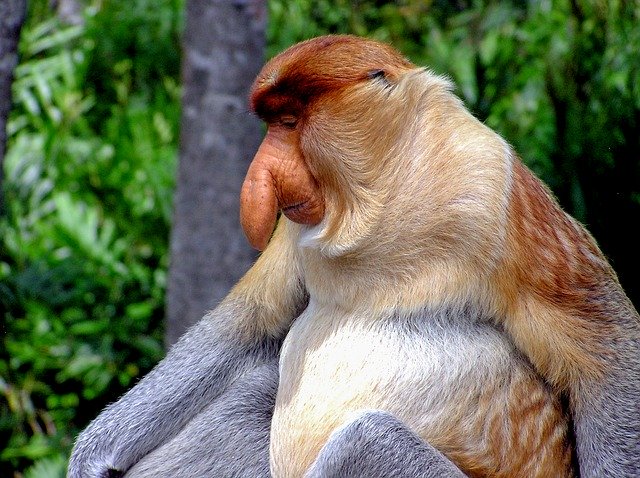Proboscis Monkeys Can't Stand Ripe Fruit
Some people know that feeling. They eat some soft, juicy, sweet fruit and have to rush to the bathroom. Unless they have a serious allergy, though, eating ripe fruit can't be as bad for humans as it can be for proboscis monkeys (Nasalis larvatus).

These odd-looking pals come from the Island of Borneo. You perhaps noticed that the species has something like a beer belly. Since they mostly eat leaves, seeds and unripe fruits, proboscis monkeys have a highly specialized, large stomach. Their stomach is pretty different to those of any other primates - they have a chambered forestomach where bacterial digestion happens prior to the glandural stomach. Eating ripe fruit can cause intense fermentation in their stomach due to ripe fruit's high sugar content, which can lead to fatal bloating.
Another interesting thing about their feeding behavior is that they regularly cast up partly digested food which they then chew a bit longer. Proboscis monkeys chew on cud! This species is so far the only example of a primate which regurgitates and remasticates naturally. A 2011 study published in Biology Letters found that this behavior probably helps them maximize food intake while maintaining digestive efficiency. Their main sources of nutrition, leaves, are very difficult to digest, so being able to eat as much as possible and maximizing their digestion is crucial.
If you've never seen a proboscis monkey before, you surely wonder - what is up with their nose?!
Their nose serves as an echo chamber which helps them make loud sounds to either attract mates or scare away their enemies. A 2018 study published in Science Advances found significant correlation between body, nose and testis size, as well as a strong link between nose size and the number of females in a male's harem, showing clearly that the nose evolved as a form of advertisement to females.
What you probably don't get to see often is that they also evolved partly webbed feet and hands to be able to walk on mangove mud or move faster in water - one of their main predators is the crocodile. They can even dive and swim underwater for up to 20 meters! Don't think, however, that their ability to swim and dive evolved purely to escape the crocodiles! Proboscis monkeys also have a good reason to escape into the water - clouded leopards. Check out this paper to read an interesting and intense report about the predation of clouded leopards on proboscis monkeys.
In a detailed description of the species, James A. Kern (1964) described the proboscis monkey as having "an utter disregard for safety" - Kern and his wife witnessed one individual jumping down some 7.25 meters onto a lower branch, many individuals jumping carelessly from one branch to another, even onto dead branches, and as the dead branch broke, the monkeys swiftly reached for another. The couple also saw an entire group of about 18-20 monkeys jumping into a stream - some members of the group jumped from a height of over 16 meters!
Humans, not their behavior, are the greatest threat to these funny and wonderful inhabitants of the Island of Borneo. Forest fragmentation severely affects them. The monkeys play an important part in seed dispersal, so protecting them is crucial for the functioning of the ecosystem they live in. They are the only known primates of the subfamily Colobinae to disperse seeds efficiently.

Photo credit: Pen_ash
| Common name: | Proboscis monkey |
| Scientific name: | Nasalis larvatus |
| Phylum: | Chordata |
| Class: | Mammalia |
| Order: | Primates |
| Family: | Cercopithecidae |
| IUCN status: | Endangered |
| Population trend: | Decreasing |
| Scientific reading: |